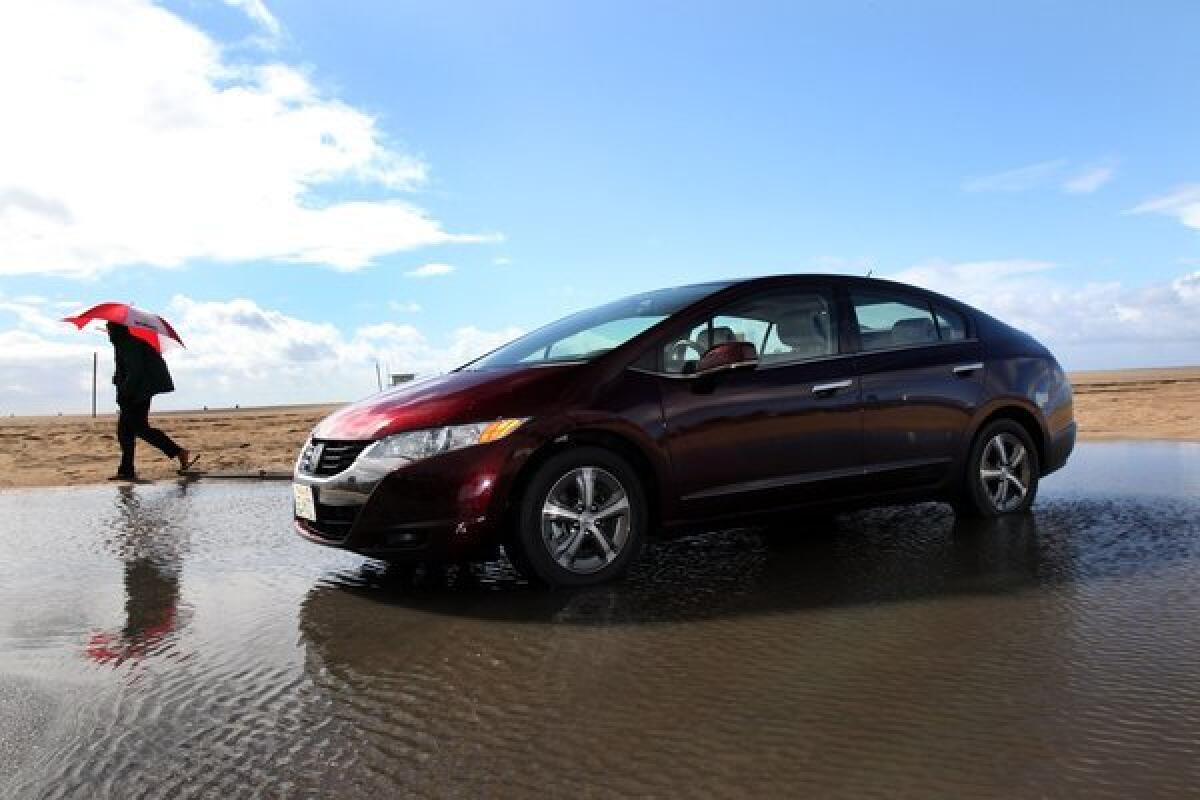GM and Honda team up on hydrogen fuel cell development

General Motors and Honda are joining forces to develop hydrogen fuel cell technology for both brands, executives announced Tuesday.
“We are convinced this is the best way to develop this important technology, which has the potential to help reduce the dependence on petroleum and establish sustainable mobility,” said Dan Akerson, GM’s chief executive.
Honda and GM will work to develop shared fuel cell and hydrogen storage technology, with a goal to sell fuel-cell vehicles by 2020.
PHOTOS: Top 10 cars with lowest sticker price per mpg
Between them, the automakers have filed more than 1,200 hydrogen-related patents. GM launched Project Driveway in 2007 to see how a fleet of nearly 120 hydrogen-powered cars function in the real world. Honda already builds a fuel-cell vehicle and leases it in limited numbers. The FCX Clarity was named World Green Car in 2009, and its successor is due out in U.S. markets in 2015.
GM has not released specifics about its fuel-cell production plans.
“GM’s knowledge of chemical reaction and advanced material is class leading,” American Honda President Tetsuo Iwamura said at a news conference in New York. “With GM and Honda sharing our technical expertise, we believe we can achieve the world’s strongest partnership in the area of fuel-cell technology.”
The joint project aims to address the chicken-or-the-egg problem facing hydrogen fuel cell technology: Legislators and investors want to see cars on the road before backing more infrastructure, while customers need fueling stations in place to feel comfortable buying the cars. Automakers also need to bring the cost of the technology down to make it viable.
The carmakers wouldn’t divulge design specifics but said future models would probably rely on high-pressure gaseous storage and carbon fiber-reinforced tanks. Manufacturing logistics – once a new system is developed – have not been discussed.
GM has a history of successful collaborations with other automakers. The company teamed up with Ford in April to create nine-speed and 10-speed transmissions for smoother shifting and higher fuel efficiency. That development marked the third time in the last decade Ford and GM have worked together on transmissions.
Elaine Kwei, an analyst with Jefferies & Co., said the joint venture looked promising.
“With the increasingly stringent emissions standards, automakers will look to a number of technologies to lower emissions for their fleets. Electrification and fuel cells are among their options, so it’s worth taking a look at,” Kwei said.
There would be some benefit in combining forces, she added, “to the extent there’s more collaboration and standardization to get you to commercial viability more quickly than going through competing standards and spreading resources more thinly.”
ALSO:
Toyota steps up hydrogen fuel cell development
California awards $18 million to build hydrogen fueling stations
Fuel cell expert says Tesla is promising more than it can deliver






